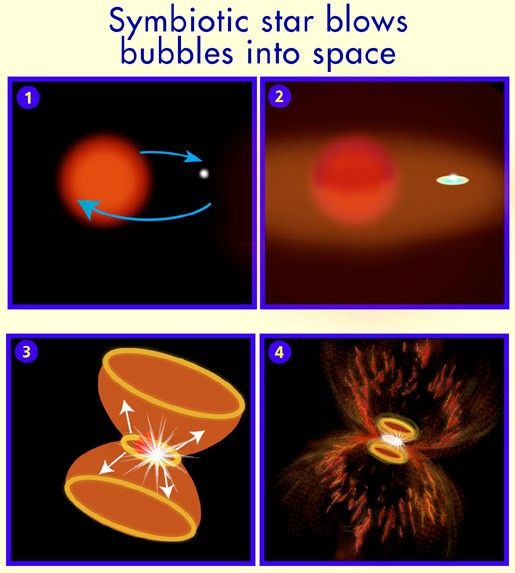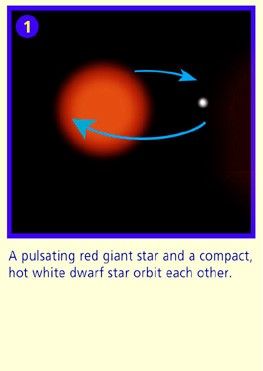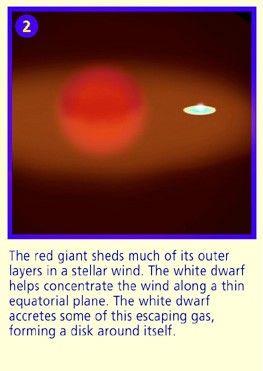A tempestuous relationship between an unlikely pair of stars may have created an oddly shaped gaseous nebula that resembles nesting hourglasses.
Images taken with Earth-based telescopes have shown the larger, hourglass-shaped nebula. But this picture, taken with the Hubble telescope, reveals a small, bright nebula embedded in the center of the larger one [close-up of nebula in inset]. Astronomers have dubbed the entire nebula the "Southern Crab Nebula" (He2-104), because, from ground-based telescopes, it looks like the body and legs of a crab. The nebula is several light-years long. The possible creators of these shapes cannot be seen in this visible-light picture. It's a pair of aging stars buried in the glow of the tiny, central nebula. One of them is a red giant, a bloated star that is exhausting its nuclear fuel and is shedding its outer layers in a powerful stellar wind. Its companion is a hot, white dwarf, a stellar zombie of a burned-out star.




































